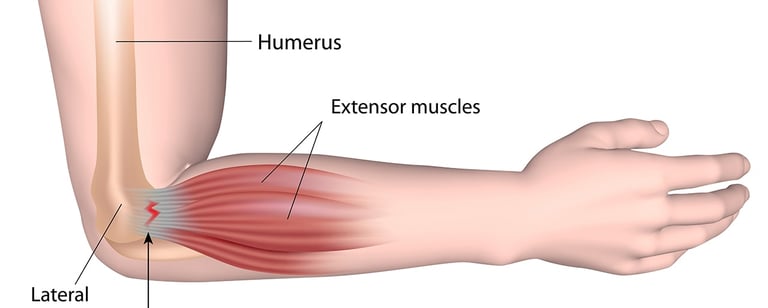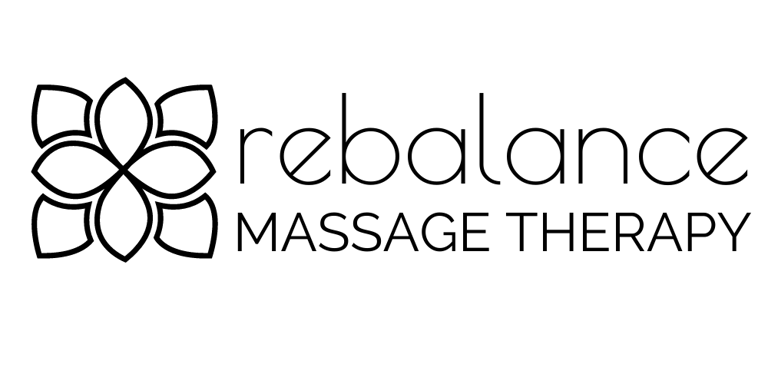Can Massage Help My Tennis Elbow?
Common causes and treatments for pain in the forearm and elbow known as lateral epicondylitis
Laurie Kessen
11/13/20223 min read
Lateral epicondylitis, commonly known as "tennis elbow", is a common repetitive strain injury (RSI) of the extensor tendons resulting in pain in the forearm or elbow. And despite the name, repetitive workplace actions, not tennis, is the most common way to develop it. Approximately 1-3% of Americans annually suffer from tennis elbow. Yet despite the common occurrence of these types of injuries, understanding its cause is somewhat of a messy situation.
Why? For one, it’s rarely studied and poorly understood. Many unexplained tendon issues around the elbow are commonly labeled tennis elbow, the same way that pain on the bottom of the foot is broadly labeled plantar fasciitis without much investigation into its cause. Although computer work can be an aggravating factor, it has little to do with causing it.
Also, not everyone who does a job where the physical load is repetitive experiences tendonitis. Some factors can and cannot be controlled, making you more vulnerable to RSI, such as genetics, lifestyle habits, and even nerve conditions in the neck, arm, or shoulder.
What is tennis elbow? Tennis elbow is characterized by swelling and pain in the back of the forearm and near the outside of the elbow. It’s considered tendonitis but may not be the result of inflammation, at least not the way we think of it. When we think of tendonitis, we think of an inflammation of the tendon, but it turns out the most common symptom is muscle pain. This probably explains why anti-inflammatory medications do not help to alleviate the pain in long-term tennis elbow injuries. Hairdressers, Dentists, Construction Workers who use vibrating equipment, Painters, Cooks, and Musicians are just a few of the professions that are likely to develop tennis elbow.
What does tennis elbow feel like? The most commonly reported symptoms of tennis elbow are burning or pain near the outside of the elbow, weak grip strength, and numbness or tingling in the forearm. The extensor carpi radialis and extensor carpi brevis muscles and tendons are the biggest offenders responsible for tennis elbow.
How is tennis elbow treated? Ice is often thought of as an effective treatment for inflammation; although there isn’t enough solid evidence to say whether or not it works on tennis elbow, it certainly can’t hurt. Just remember not to use ice directly on the skin or leave it for more than 10-15 minutes at a time. As mentioned above, anti-inflammatory drugs have little effect beyond reducing pain at the initial onset of tennis elbow, but they aren’t without their usefulness. In addition to anti-inflammatory drugs, some people use topical analgesics, creating an opportunity for the pain to subside, so healing treatments like physical therapy can be used.
Physical therapy can be helpful in treating tennis elbow by introducing baby steps to increase the extensor muscles' load capacity gradually.
In some cases, steroid injections or surgery may be the only option, but these are rare. Especially considering that the long-term studies on the use of corticosteroids to treat tendinopathy are not positive due to the fact that, over time, corticosteroids eat connective tissue, they should be considered carefully.
What about massage therapy? Massage has been shown to be helpful in reducing the pain caused by trigger points in the extensor muscles and tendons using long strokes from the wrist toward the elbow, as well as sustained pressure on the junction of the muscle and tendon. The key is to start off with gentle pressure and then build up to slightly deeper but tolerable pressure. Massage therapy helps to bring more blood flow to the area as well as relieve the stiffness and soreness.
I often recommend MyoKinesthetic treatments as well to alleviate the pain, treat compensatory muscles and help restore movement. If needed, I can incorporate kinesiotape at the end of the treatment to help relieve the strain on the muscles and tendons for a couple days.
If you’re looking to treat your tennis elbow in a non-invasive, cost-effective way, massage therapy might be a great option for you. I provide massage therapy in Bellingham, Wa and Custer, Wa. The easiest way to get started is to book a session with me using the online scheduler or if you have more questions, email me at laurie.rebalancemt@gmail.com.


